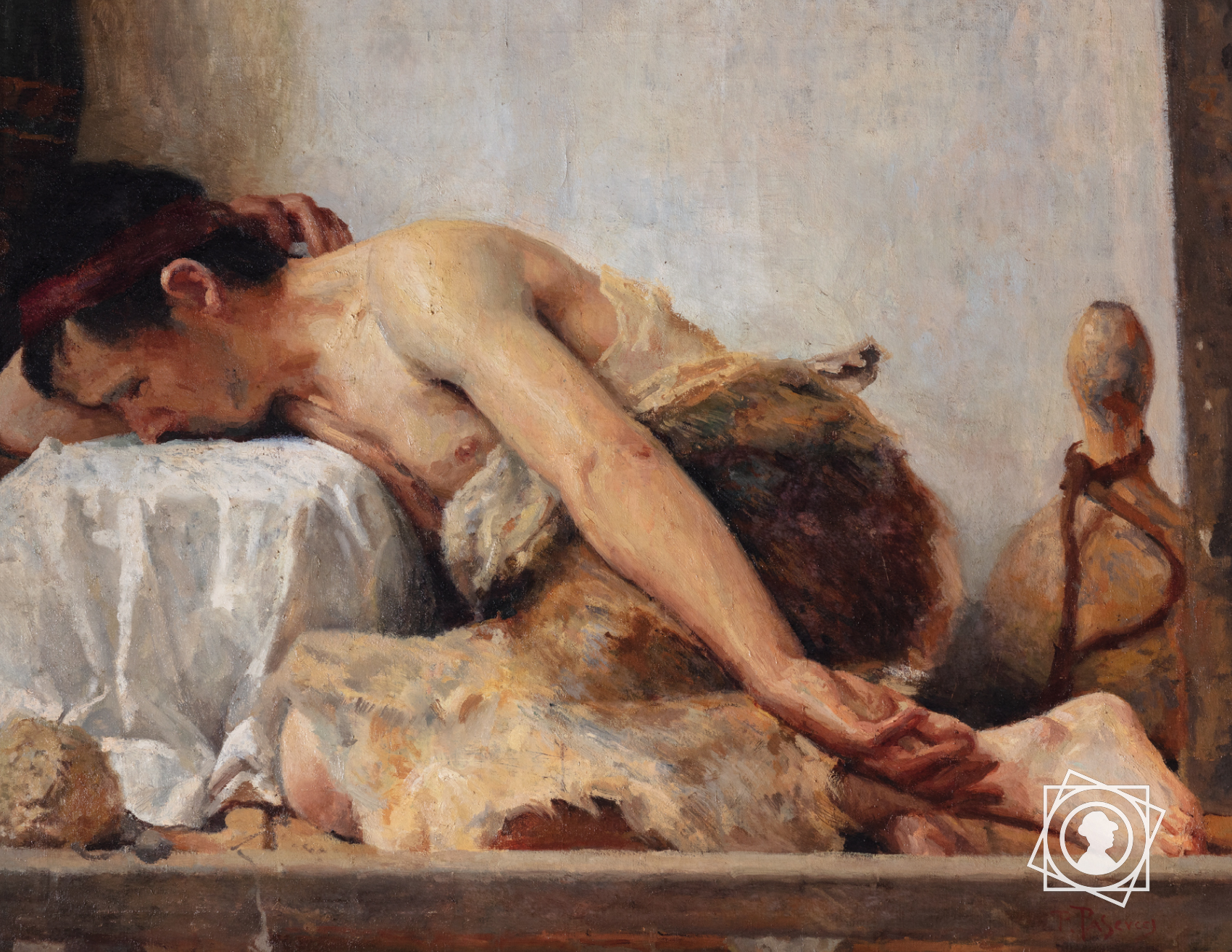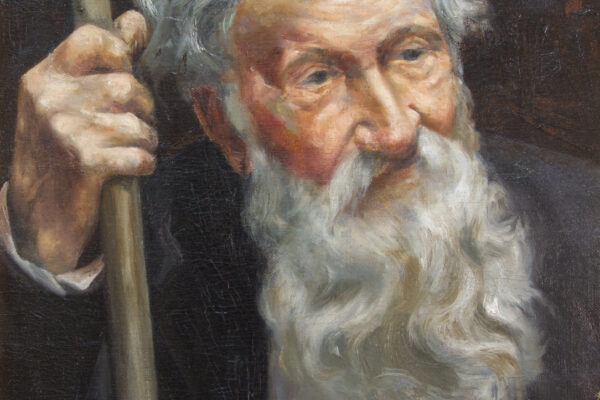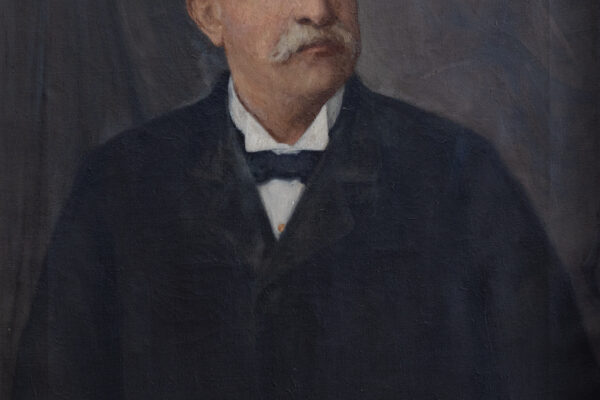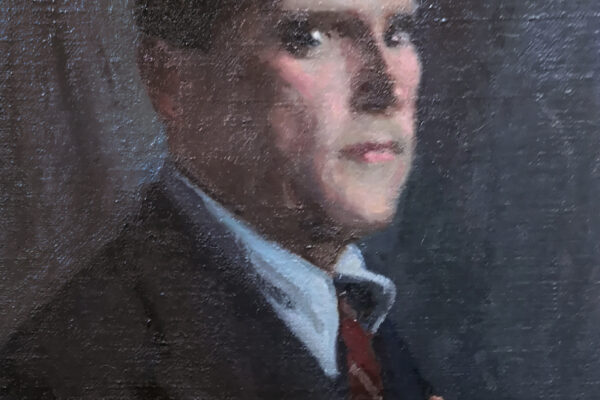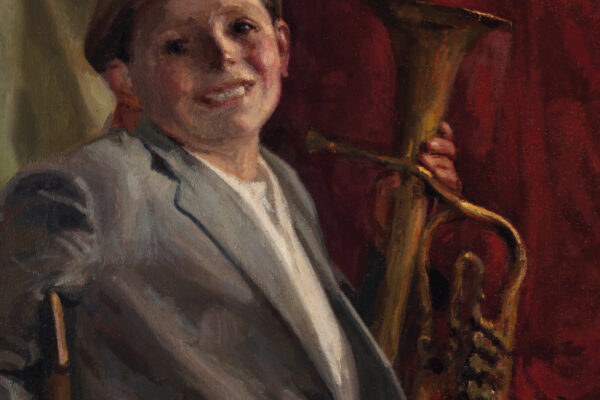Oil on canvas, 73×93 cm
1901
Siena, Collection of the Società di Esecutori di Pie Disposizioni
In early 1902 Pascucci sent this picture, under the title The Repose of the Shepherd, to the Società di Esecutori di Pie Disposizioni to obtain an extension of the Biringucci fellowship, granted for another six months because of the very high quality of the painting.
The subject here is a primitive shepherd wearing an animal’s skin, exhausted by fatigue and slumping over a makeshift bed. The artist himself later changed the title to Jacob Sleeping to recall the Bible passage of Jacob’s prophetic dream, when the man, at the setting of the sun, stopped and “taking one of the stones there, he put it under his head and lay down to sleep” (Genesis 28:11).


